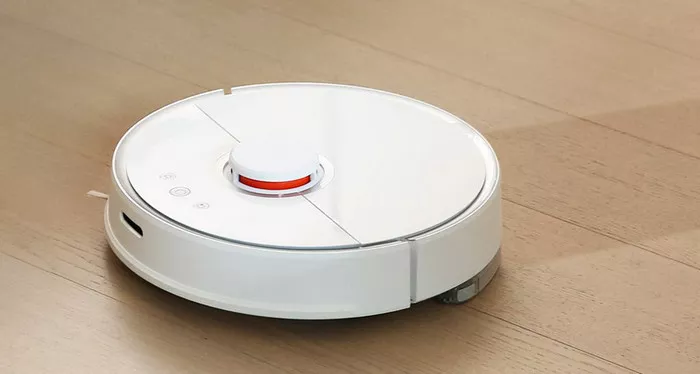Maintaining a clean and healthy home environment requires a strategic approach to cleaning tasks. Among the fundamental debates in household cleaning routines is the order in which dusting and vacuuming should be performed. While some may argue for vacuuming first, there is a strong consensus among cleaning experts that dusting should precede vacuuming. In this comprehensive guide, we delve into the reasons behind this recommended sequence, offer practical tips for effective cleaning, address common concerns, provide insights from cleaning professionals, and offer visual aids and an FAQ section to ensure a thorough understanding for readers.
The Recommended Cleaning Sequence
One of the cardinal rules of household cleaning is to start with dusting before vacuuming. This sequence is advocated by cleaning professionals and experts alike due to its efficiency and effectiveness in achieving a pristine living environment. Dusting first ensures that any loose particles and debris are lifted off surfaces, allowing the vacuum cleaner to efficiently capture them.
According to Martha Stewart, renowned lifestyle expert and homekeeping guru, “Dusting before vacuuming is essential as it prevents dust particles from settling back onto cleaned surfaces.” This statement underscores the importance of adhering to the recommended cleaning sequence to maximize cleaning efficacy.
Reasons Behind the Sequence
The logic behind dusting before vacuuming lies in the nature of dust particles and the capabilities of modern vacuum cleaners. When surfaces are dusted, particles become airborne and may settle on nearby surfaces. By vacuuming after dusting, these airborne particles are promptly captured, preventing them from resettling on cleaned surfaces.
Modern vacuum cleaners equipped with High-Efficiency Particulate Air (HEPA) filters are particularly effective in capturing even the smallest dust particles. HEPA filters can trap particles as small as 0.3 microns with high efficiency, significantly enhancing indoor air quality. Therefore, dusting before vacuuming aligns with the capabilities of HEPA-equipped vacuums, ensuring thorough cleaning and minimizing the redistribution of dust.
Practical Tips for Effective Dusting and Vacuuming
To optimize the dusting process, it’s essential to employ effective techniques and tools. Microfiber cloths are highly recommended for dusting as they trap dust effectively without dispersing it into the air. When dusting, work methodically from top to bottom, starting with higher surfaces such as shelves and ceiling fans before moving downwards to tabletops and furniture.
When it comes to vacuuming, utilizing the appropriate attachments for different surfaces enhances cleaning efficiency. For example, use the crevice tool for tight spaces and corners, the upholstery brush for fabric surfaces, and the floor brush for hardwood or tiled floors. Regular maintenance of vacuum cleaner attachments ensures optimal performance and extends the lifespan of the appliance.
Addressing Common Concerns
While the recommended cleaning sequence provides optimal results for most households, it’s essential to acknowledge that individual preferences and physical limitations may influence cleaning practices. Some users may find it more practical to vacuum first, especially in high-traffic areas where debris accumulation is substantial. In such cases, adjusting the cleaning sequence based on specific needs is acceptable.
For individuals with physical limitations, such as mobility issues or respiratory conditions, adapting cleaning techniques is paramount. In these instances, utilizing lightweight or cordless vacuum cleaners and enlisting the help of household members or professional cleaners can alleviate the burden of cleaning tasks while maintaining a clean environment.
Expert Opinions and Credible Sources
To substantiate the recommended cleaning practices, insights from reputable sources and cleaning professionals are invaluable. Martha Stewart, renowned for her expertise in homekeeping and lifestyle, emphasizes the importance of adhering to established cleaning sequences for optimal results. Moreover, cleaning professionals advocate for dusting before vacuuming as a standard practice in maintaining cleanliness and indoor air quality.
Incorporating expert opinions and advice from credible sources reinforces the validity of the recommended cleaning sequence and instills confidence in readers seeking guidance on household cleaning routines.
Visual Aids for Enhanced Understanding
Visual aids such as images and diagrams can provide clarity and enhance understanding of the dusting and vacuuming process. Illustrative diagrams demonstrating the step-by-step approach to dusting and vacuuming, along with the proper use of cleaning tools and attachments, serve as valuable references for readers.
By incorporating visual aids, this guide aims to facilitate comprehension and enable readers to implement effective cleaning techniques with confidence.
FAQs
Q1: Is it necessary to dust every day?
A1: While daily dusting may not be required for every household, frequent dusting is recommended, especially in high-traffic areas or homes with allergy sufferers. Establishing a regular cleaning routine helps maintain cleanliness and indoor air quality.
Q2: Can I use a feather duster instead of a microfiber cloth for dusting?
A2: While feather dusters may be effective in certain situations, microfiber cloths are preferred for dusting as they trap and hold dust particles without dispersing them into the air. Microfiber cloths provide superior cleaning performance and are reusable, making them a more sustainable choice.
Q3: How often should I replace the HEPA filter in my vacuum cleaner?
A3: The frequency of HEPA filter replacement depends on usage and manufacturer recommendations. As a general guideline, it’s advisable to replace HEPA filters every six to twelve months to ensure optimal filtration efficiency and maintain indoor air quality.
Q4: Can vacuuming alone eliminate dust mites and allergens from carpets and upholstery?
A4: While vacuuming is effective in removing surface debris and dust, it may not completely eliminate dust mites and allergens embedded deep within carpets and upholstery. To address these concerns, periodic deep cleaning using steam cleaners or professional cleaning services is recommended.
By addressing common queries, this FAQ section aims to provide additional value and clarity to readers seeking guidance on household cleaning practices.
Conclusion
In conclusion, establishing a systematic cleaning sequence, starting with dusting before vacuuming, is crucial for achieving optimal cleaning results and maintaining a healthy indoor environment. By adhering to recommended practices, utilizing effective cleaning techniques and tools, and addressing individual needs and concerns, homeowners can ensure a clean and comfortable living space for themselves and their families.

